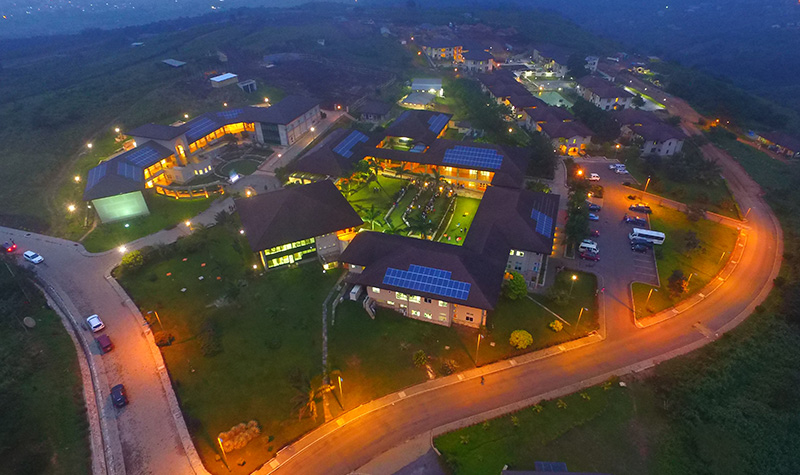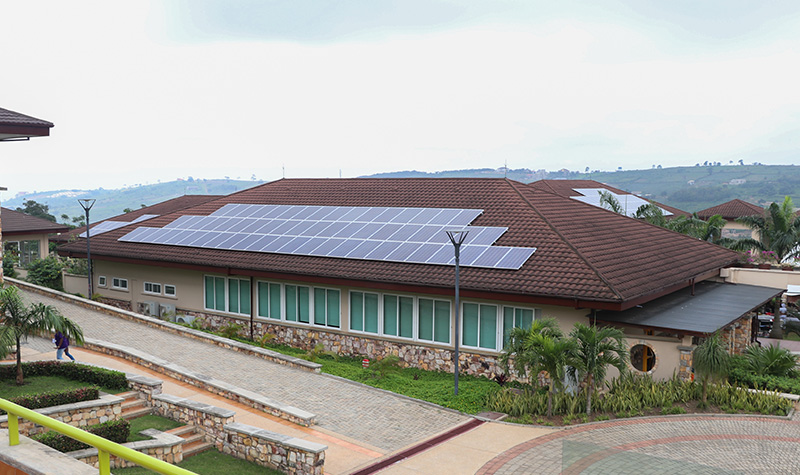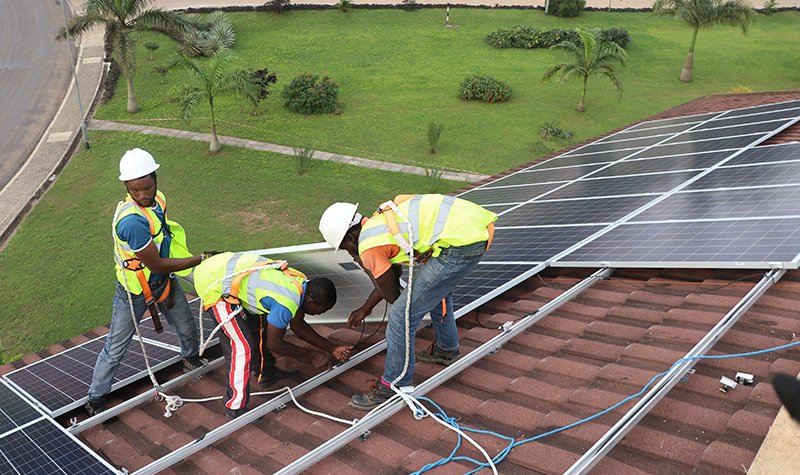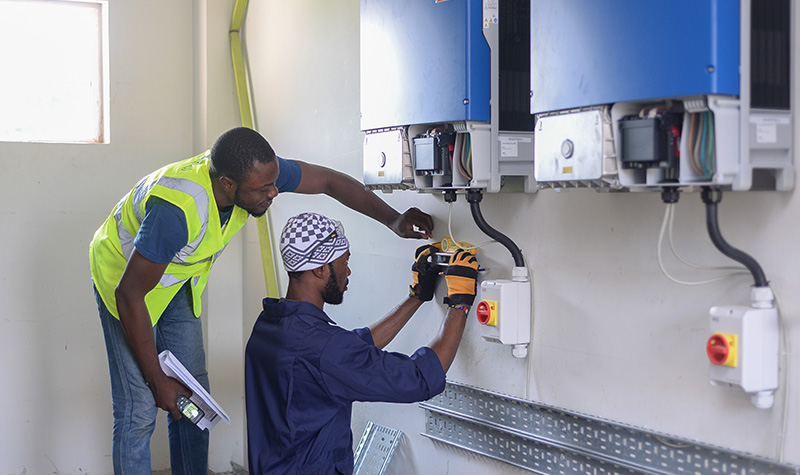
When Ashesi moved to its permanent campus in Berekuso in 2011, the proverbial house-warming that comes with new facilities was cut short in a matter of weeks; the campus encountered unexpected and severe energy supply issues.
Supply of electricity from the national grid was significantly below the university’s energy demand, and often unstable, resulting in investments into backup power plants to supplement the demand. The challenge signalled that in the long-term, the university would need to have alternative sources of clean energy, and conversations for making this happen were quietly held.
Six years later, Ashesi is rolling out a plan for boosting clean energy supply, and it is now estimated that nearly 45% of the school’s energy consumption will be supplied through solar by the end of 2017.
Powered by 720 photovoltaic panels installed across the campus, with a generating capacity of 200 kilowatts, the university has taken a huge step towards achieving carbon-neutrality.

“We have been committed to strengthening environmental sustainability at Ashesi since day one,” says Casper Annie, Facilities and Logistics Director. “Since 2011, we have harvested hundreds of thousands of gallons of rainwater, continually treated for use all across campus. We are not connected to the national water pipeline, and are completely self-sufficient. We continue to expand our water harvesting infrastructure, and our treatment facility is always being expanded alongside it. Our treated water quality meets the WHO accepted standard, and clean drinking water is available from our taps on campus. We have done the same with all our septic waste, with a biogas plant that treats waste and generates effluent water for our gardens, and gas for our ovens. We try to conserve and reuse as much as we can.”

“By adopting solar, we have taken the next step to reducing Ashesi’s environmental footprint, because we can now significantly reduce our use of generators,” he adds. “We are pushing to get as close to full sustainability as possible.”
Charting a new path
Ashesi’s solar installation, which is expected to produce about 23,500 kilowatt hours of electricity each month, will power lecture halls and offices in Radichel Hall, the Warren library, and the King Engineering building. The system is designed to operate at maximum efficiency for a little over two decades, after which the solar panels would need to be upgraded.

“We feel that solar is a very exciting way to add diversity to the energy mix across Ghana,” said George Bowman, Founding Director at Azimuth Power, the solar energy firm in charge of the installation at Ashesi. “And I think it’s entirely appropriate that a university, especially Ashesi, has taken such a strong lead in building a project of this scale.”
Ashesi’s engineering students are also engaging with solar technology, building prototypes for solar charging devices and irrigation systems. Three engineering students also helped to deploy Ashesi’s solar system.

“Our strategy is to eventually move completely off-grid and have solar as our primary source of energy, with power from the national grid as a plan B, and generator plants only as a last resort,” said Casper Annie. “As a country, Ghana is looking to turn towards industrialization, and this will require a lot of power. The country will need all the help it can get in meeting this surge in demand. By freeing, and where possible, even generating energy for the grid, the Ashesi community plays its role as good citizens.”
Share this story
